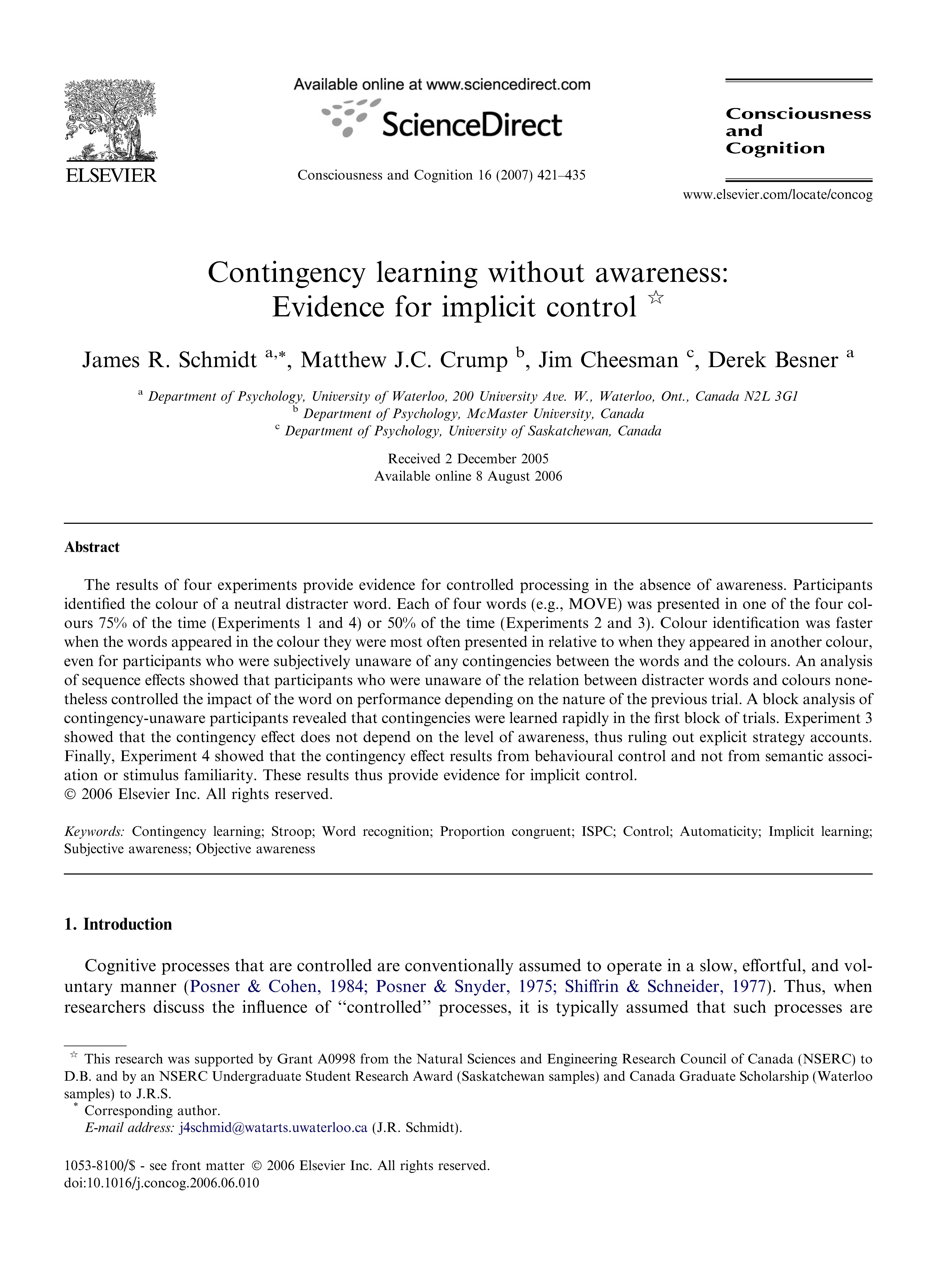The results of four experiments provide evidence for controlled processing in the absence of awareness. Participants identified the colour of a neutral distracter word. Each of four words (e.g., MOVE) was presented in one of the four colours 75% of the time (Experiments 1 and 4) or 50% of the time (Experiments 2 and 3). Colour identification was faster when the words appeared in the colour they were most often presented in relative to when they appeared in another colour, even for participants who were subjectively unaware of any contingencies between the words and the colours. An analysis of sequence effects showed that participants who were unaware of the relation between distracter words and colours nonetheless controlled the impact of the word on performance depending on the nature of the previous trial. A block analysis of contingency-unaware participants revealed that contingencies were learned rapidly in the first block of trials. Experiment 3 showed that the contingency effect does not depend on the level of awareness, thus ruling out explicit strategy accounts. Finally, Experiment 4 showed that the contingency effect results from behavioural control and not from semantic association or stimulus familiarity. These results thus provide evidence for implicit control.
Contingency learning without awareness: Evidence for implicit control
